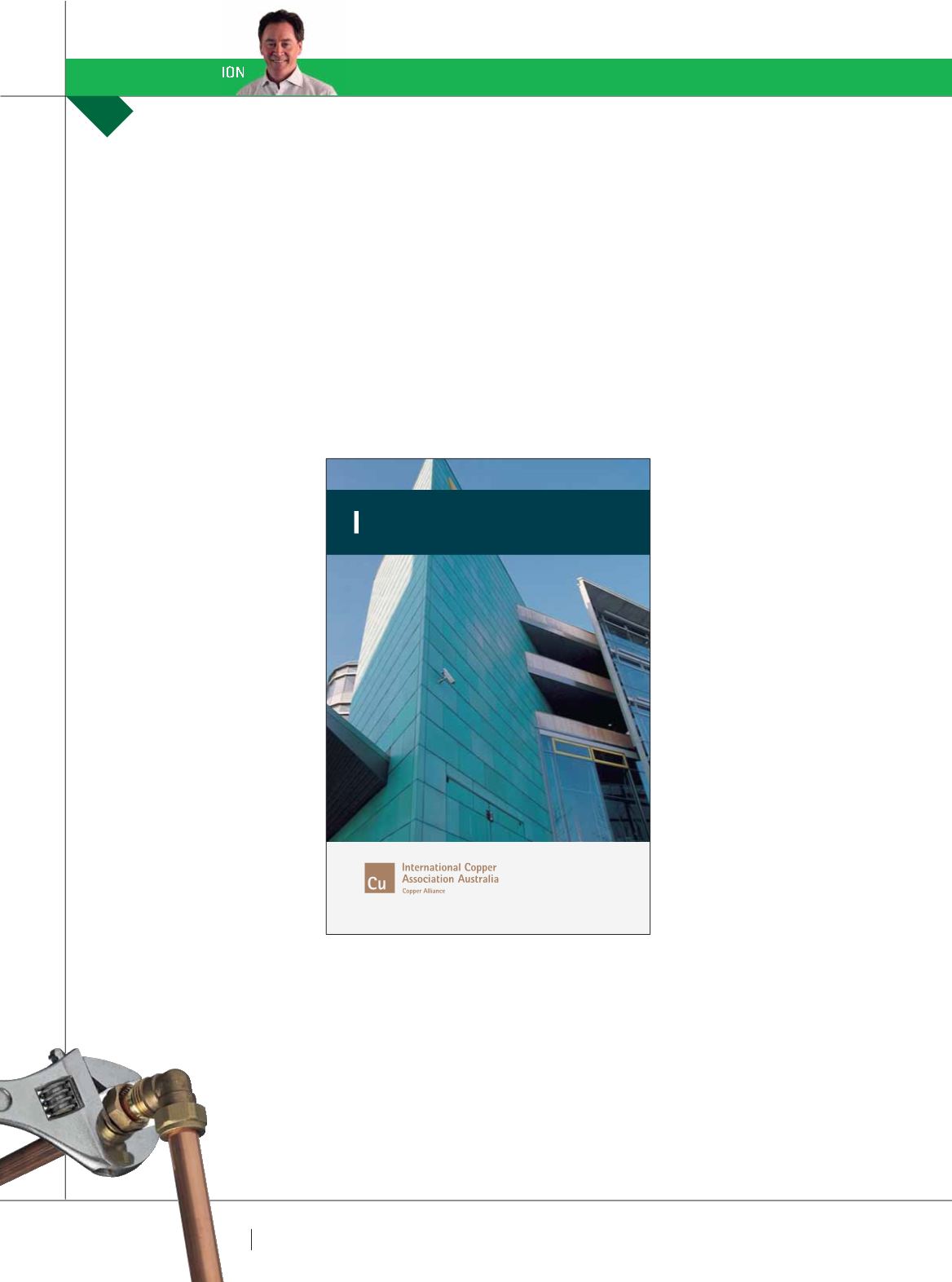

8 0
PLUMBING CONNECTION
SPRING 2015
KEEPING YOUR PIPES HEALTHY
A
healthy plumbing system has to consider everything
from design, installation, and commissioning to the
operation of the system for the entirety of its service
life. Plumbing systems that are poorly designed, or where
the systems operation has changed over time, can lead to
poor quality water.
One of the greatest threats to the quality and longevity of
a plumbing system is stagnant
water. Allowing stagnant water to
develop can generate biofilms in
the pipes, potentially allowing the
growth of pathogens which are
harmful to people. Uncirculated
water can accumulate toxins
from chemical absorbed through
plastic pipes or heavy metals
being leached from metallic pipes
over time.
The Plumbing Code of Australia
and Australian Standard AS /NZS
3500 set out requirements and
guidelines to ensure that these
problems do not arise. For other
useful design ideas and methods,
download the Hydraulic Services
Design Guide from www.copper.
com.au.
DESIGN & INSTALLATION
The correct design of
a plumbing system is key
to healthy, high quality
performance. During design, dead
leg piping should be avoided or
restricted to being as short in length as possible. A flushing
facility (tap) should be provided where there is low draw-off
and fixtures that are seldom used should be placed on flow
lines or close to a regularly used service.
Cross-connections of the drinking water supply
to other water supplies, such as
rainwater or recycled water, is another
potential contamination. All water
supply systems must be designed
and installed so as to prevent
contaminants from entering the
drinking water supply.
Where there is a possibility of cross-connection,
protection is achieved by the installation of backflow
prevention devices and air gaps between supply pipework
and storage systems. Identification and marking of non-
potable water supplies and colour coding of pipework is
another way of reducing the chances of contamination.
Section 4 of Australian/New Zealand Standard AS/NZS
3500.1 deals with this aspect and
must be strictly
adhered to.
Correct pipe sizing during
design is also crucial. There
needs to be sufficient water for
all the intended uses, including
peak demand, and if the pipe size
is too small the water velocity
and friction losses will be too
great, potentially causing erosion
and wearing of the pipes. If the
pipes are excessively oversized
however, there will be insufficient
flow to minimise biofilm build up
and settling of silt.
COMMISSIONING & OPERATION
During commissioning all
systems shall be thoroughly
flushed out as soon as possible
after installation to remove
foreign matter and should
continue until the water runs
completely clear. The system can
then be pressure tested to the
relevant regulation.
Water from reticulated systems (municipal water supply)
is usually satisfactory for flushing and testing purposes.
Where non-disinfected water is to be used for flushing
and testing, water shall be disinfected. A procedure for
disinfecting water is outlined in AS 4809 and AS/NZS
3500.1.
If more than 8 weeks between installation and full system
use is unavoidable:
∫ the system shall be kept completely full and clean water
shall be flushed frequently (every 2 weeks) from each
fixture until the system is used;
OR
IT’S ALL A MATTER OF THE RIGHT PRODUCTS, INVESTMENT AND BALANCE SAYS CEO OF THE INTERNATIONAL
COPPER ASSOCIATION AUSTRALIA
JOHN FENNELL.
COPPER CONNECTION
JOHN FENNELL
Hydraulic Services Design Guide
1
st
EditionApril 2014
















